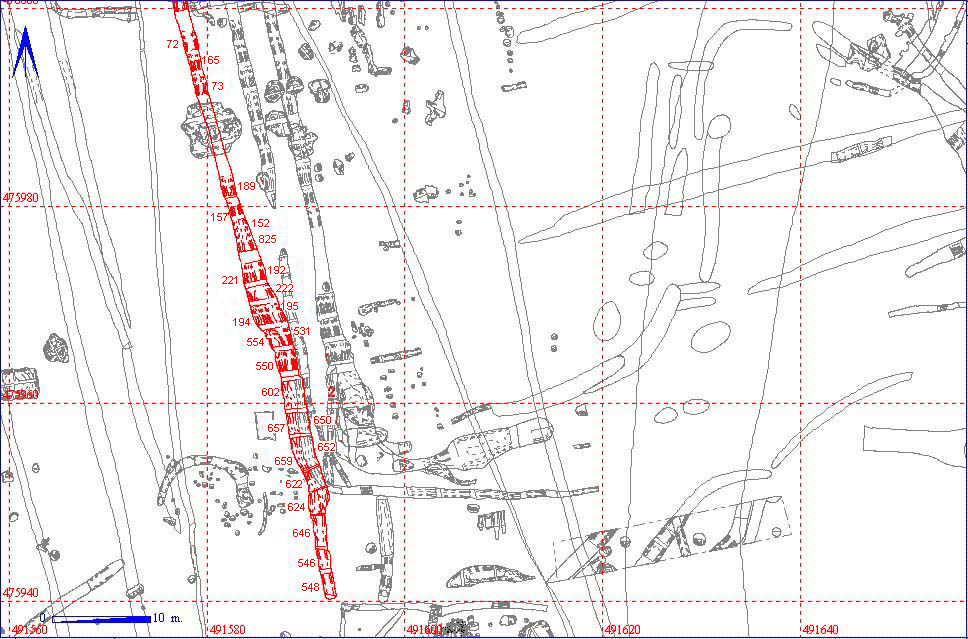
The fill of the north-south oriented part of the ditch is generally a sandy clay loam (Munsell 10/YR/34), changing to a loamy sand in the southern extension. A recut of this phase was visible in a number of sections along the southern half of the enclosure. This is particularly visible in section 011AB00192, where a deeper ditch in the east had filled in before being recut in the west, although much more shallow than before.
Generally speaking, the density of animal bone deposits in this phase of the enclosure ditch was lower than the earlier two phases, particularly in this southern section.
The ditch section 011AB00071 demonstrates the level of disturbance in this area of the site, containing as it does Iron Age, Roman and Medieval pottery, as well as an Anglian copper alloy object. However, it is quite possible that the Anglian object was intrusive, from the Saxon slot (difficult to define on the ground) which cut through the Roman enclosures at this point.
The objects found in the southern section of this phase of the enclosure system were among the most remarkable of the entire settlement excavation. Ditch section 011AB00825 contained a copper alloy ring and part of a Roman column base. Ditch section 011AB00622 contained one of only 2 objects of gold (a bent gold pin) found in the settlement area. (The other was an Iron Age stater from Site 12AD). This context also included part of a human cranium, apparently deliberately sliced, as well as numerous other objects. The proximity of the human remains to the possible proto long barrow (011AB10014) just to the east is significant, and may well be part of a derived or residual deposit.